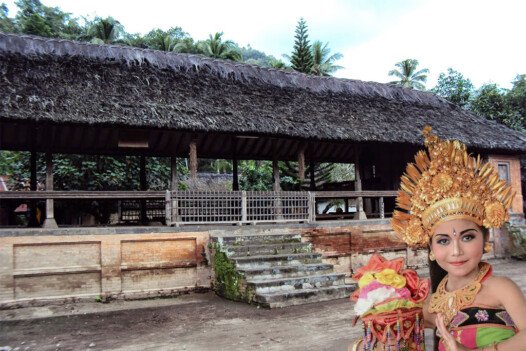Bali is often painted with broad strokes of paradise — sun-kissed beaches, vibrant nightlife, and crowded temples. But if you really want to see the real Bali, your journey begins in Ubud, the cultural heart of this enchanting island. Beyond the typical tourist trail, Ubud reveals layers of spirituality, tradition, and untouched nature that make Bali far more than just a postcard-perfect destination.
If you’ve ever wondered what lies beyond the guidebooks and Instagram hotspots, this article will take you through 7 hidden or lesser-known sights in Ubud. These places offer a glimpse of authentic Bali — its people, culture, and natural beauty — that few travelers get to experience.
Let’s dive into the soul of Bali through Ubud’s lesser-seen gems!
1. The Sacred Monkey Forest Sanctuary’s Secret Paths 🐒🌳
Most visitors to Ubud have heard of the Sacred Monkey Forest Sanctuary, home to hundreds of cheeky long-tailed macaques. However, few wander beyond the main paths where tourists typically flock.
What Makes It Special?
Deep within the forest are quiet trails lined with ancient banyan trees and moss-covered statues that seem untouched by time. Here, you can listen to the symphony of nature, watch monkeys interact naturally, and feel the forest’s spiritual energy.
Insider Tip:
Head toward the less traveled Pura Dalem Agung area, a temple hidden in the forest, where you can experience traditional Balinese rituals if you time your visit right.
Why Go?
This experience is a reminder that Ubud’s nature is alive with culture and spirituality, not just wildlife. It’s about walking softly where Balinese people have for centuries.
2. The Art of Batik at Celuk Village 🎨🖌️
Celuk is famed for its silversmiths, but just nearby lies a quieter village — the Batik artists’ haven.
What is Batik?
Batik is a traditional Indonesian fabric dyeing method using wax-resist techniques to create intricate patterns.
Why Visit Celuk’s Batik Village?
Here, artisans still handcraft batik pieces using traditional tools and natural dyes made from local plants. Visiting small workshops, you can learn how patterns are painstakingly drawn and waxed before being dyed. The process is meditative and reflects Bali’s harmony with nature.
Bonus Experience:
Join a workshop and create your own batik fabric to take home — a unique souvenir full of story and soul.
3. The Hidden Rice Terraces of Jatiluwih 🌾🌄
Everyone knows the famous Tegallalang Rice Terraces, but they can get overwhelmingly busy. For a quieter, more authentic experience, Jatiluwih Rice Terraces offers breathtaking landscapes that are less commercialized.
What to Expect?
Jatiluwih is part of the Subak system, a UNESCO-recognized cooperative water management system that has governed Bali’s rice farming for centuries. Walking through these terraces, you’ll witness farmers at work and can soak in panoramic views of endless green steps stretching across hills.
Why It’s Different:
Unlike tourist-heavy spots, Jatiluwih feels like stepping back into rural Bali. The terraced fields invite contemplation and connection with the land and its caretakers.
4. Traditional Healing and Spirituality at Pura Gunung Kawi 🏞️
Hidden in a lush valley, Pura Gunung Kawi is a sacred temple complex carved directly into the rock cliffs.
Why Visit?
This site is not only architecturally stunning but is also a living spiritual center where Balinese Hindus come for healing and meditation. The temple’s peaceful atmosphere invites you to slow down, reflect, and observe the deep spirituality woven into everyday Balinese life.
What Sets It Apart?
You can witness traditional healing ceremonies here — a beautiful intersection of faith, nature, and culture that rarely makes it into tourist itineraries.
5. Sari Organic: A Farm-to-Table Experience in the Jungle 🥗🌱
Step away from busy Ubud streets into the jungle to find Sari Organic, a farm and cafe that embodies Bali’s eco-conscious movement.
What’s Unique?
Here, you’ll find fresh vegetables grown using organic methods, served directly in delicious, healthy meals. The setting is stunning — an open-air dining space surrounded by rice paddies and tropical plants.
Why You’ll Love It:
This is more than a meal; it’s a lesson in sustainability and respect for the earth. The founders are passionate about preserving Bali’s agriculture and empowering local farmers.
6. Discover the Ancient Healing Arts of Bali in Peliatan Village 🌿💆♂️
Peliatan is a quiet village known for its traditional dance and healing arts. While many tourists flock to performances, fewer explore the village’s holistic healing traditions.
What to Experience?
Here, you can book sessions with local healers who practice Jamu medicine, massage, and spiritual cleansings. Jamu, made from natural herbs and spices, is a centuries-old Balinese tradition for detox and wellness.
Why Visit?
It offers a rare chance to engage with Bali’s indigenous health wisdom and understand the island’s philosophy of balance between body, mind, and spirit.
7. The Secret Waterfalls of Tukad Cepung and Tegenungan 💧🍃
While Tegenungan Waterfall is famous and often crowded, nearby Tukad Cepung Waterfall remains a hidden wonder.
Why Is Tukad Cepung Special?
You have to hike through a cave and dense jungle to reach it, but once inside, the waterfall creates a magical light beam effect — a natural cathedral of water and sunlight. It’s serene, dramatic, and feels like a secret kept by nature itself.
Bonus Spot:
Explore the less-visited sides of Tegenungan, especially early in the morning, when the falls glow with soft light and fewer people are around.
Why Ubud Is More Than Just a Tourist Spot 🧘♀️🌿
Ubud’s charm is rooted in its authenticity — the way tradition, nature, and spirituality coexist. This article barely scratches the surface of what lies beyond the guidebooks, but it invites you to experience Bali with deeper awareness.
Whether it’s walking through sacred forests, watching artisans at work, or sharing a meal at a sustainable farm, these seven sights remind you that travel isn’t just about seeing famous landmarks — it’s about connecting with the soul of a place and its people.
Final Thoughts
Next time you visit Bali, slow down. Venture beyond the postcards and let Ubud’s hidden treasures show you the real Bali — full of beauty, wisdom, and heart.









